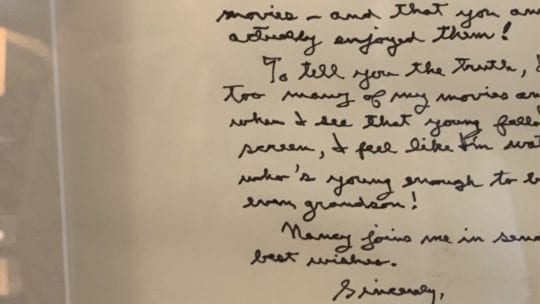
[Editor’s Note: This is the second in a series of articles about the history of PR. The series is a joint effort with the Museum of PR. It celebrates the 75th anniversary of PRNEWS.]

I stood outside the glass door in inquisitive anticipation. It slid open with a barely audible whoosh. As I stepped inside, the familiar scent of old books overcame me. I was in the world’s only museum dedicated to PR; it was paradise.
Since 1997, the Museum of Public Relations has served as the primary repository for papers, artifacts, photos and oral histories documenting PR’s development. The original works of Ivy Lee, Edward Bernays, Doris Fleischman, Arthur W. Page and others fill its archives. It also hosts events.
Kid in a Candy Store
I didn’t know where to begin.
The first artifact to catch my attention was a handwritten note from former President Ronald Reagan to Harold Burson. Just that morning I had been reading Burson’s memoirs, The Business of Persuasion, where he describes receiving that very letter.
Immediately, the life and work of a PR icon had become more than a story on a page – for me, it was real. This would not be the last time history would come to life during my visit.
Shelley Spector, co-founder of the museum, started the tour with the inbox of Bernays, still full of the papers left when he passed in 1995, aged 103.
The thrill of going through those papers, after donning white archival gloves, is something I can’t quite put into words. You know you’ll never forget it and it will become a story you’ll tell over and over again.
As a friend of Bernays,’ Spector offered valuable insight. “Bernays -- a double nephew of Freud -- was so influenced by psychology that he developed PR as an ‘applied social science,’” she said. “Bernays was doing qualitative research on the public a century ago and designed campaigns that dealt with people’s inner desires and motivations. For the early 20th century that was sophisticated stuff.”
We moved on to a prize that Spector and her husband, Barry, also a Museum co-founder, discovered while going through the papers of Lee, the founder of modern PR.
They found the only known full-length, unpublished manuscript. Written in the mid-1920s, it is a guide for practitioners and the public about how to cope with the relentless flow of information. It also contains advice about how to separate truth from reality. That guidance remains relevant, of course. Thankfully, the Museum has published Lee’s manuscript.
A Rocky Surprise
I noticed something next to the manuscript. As I carefully unwrapped the artifact, I realized it was Ivy Lee’s address book. After the initial shock had worn off, I knew there was one page I had to see. And I found it – a page with the home addresses of each of the Rockefellers, who were contacts.
As PR pros know, your contact list is crucial. Holding one that includes the Rockefellers was awe-inspiring.
Having a storehouse for PR’s history is a necessity that we must support. Without history, we have no future.
CONTACT: [email protected]
